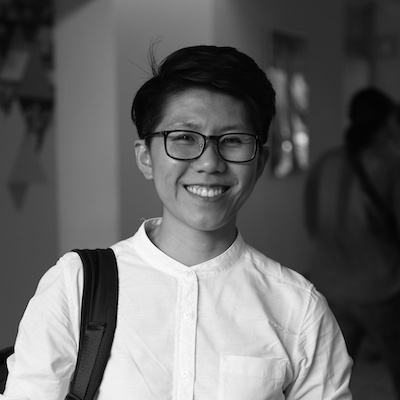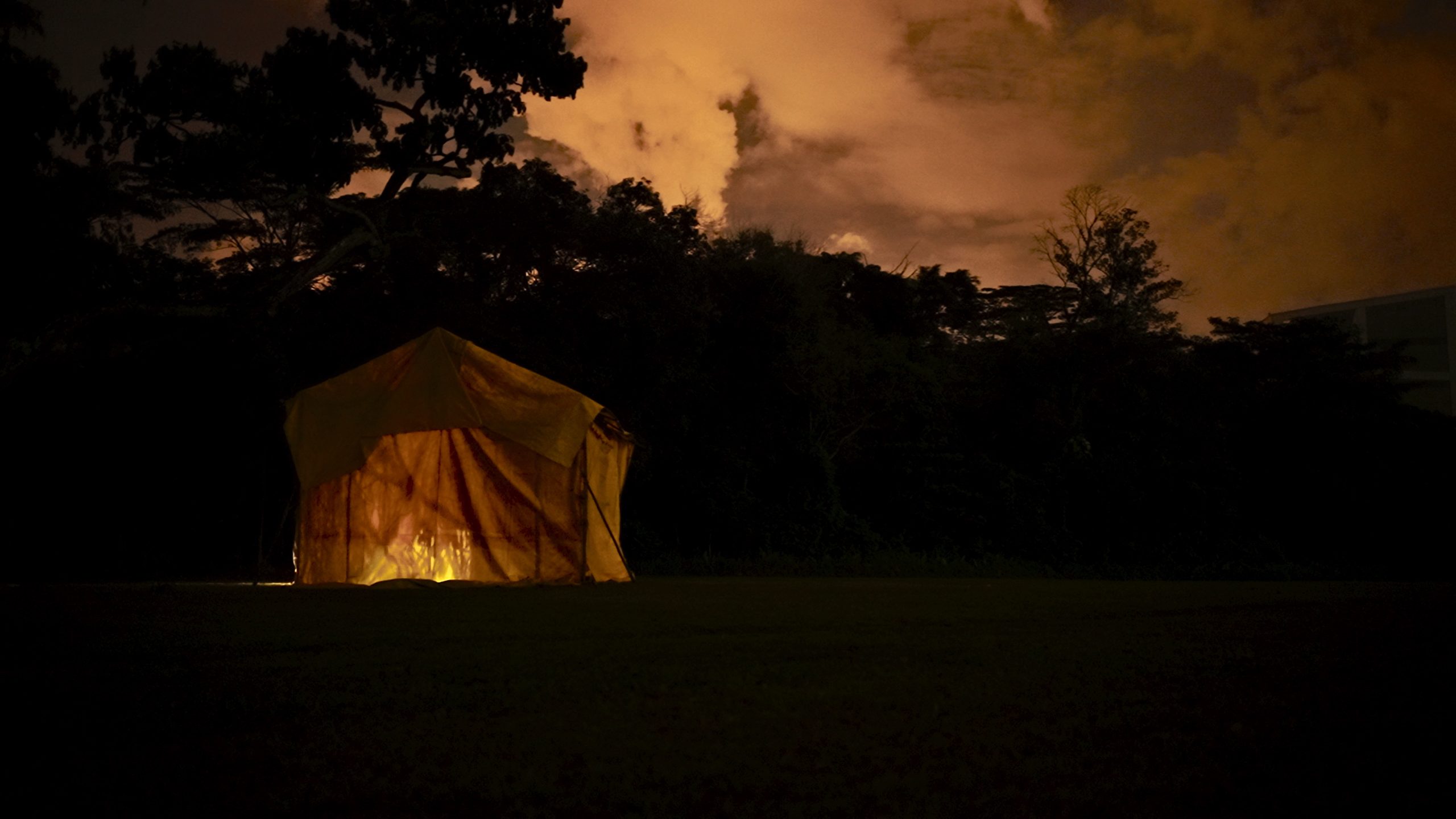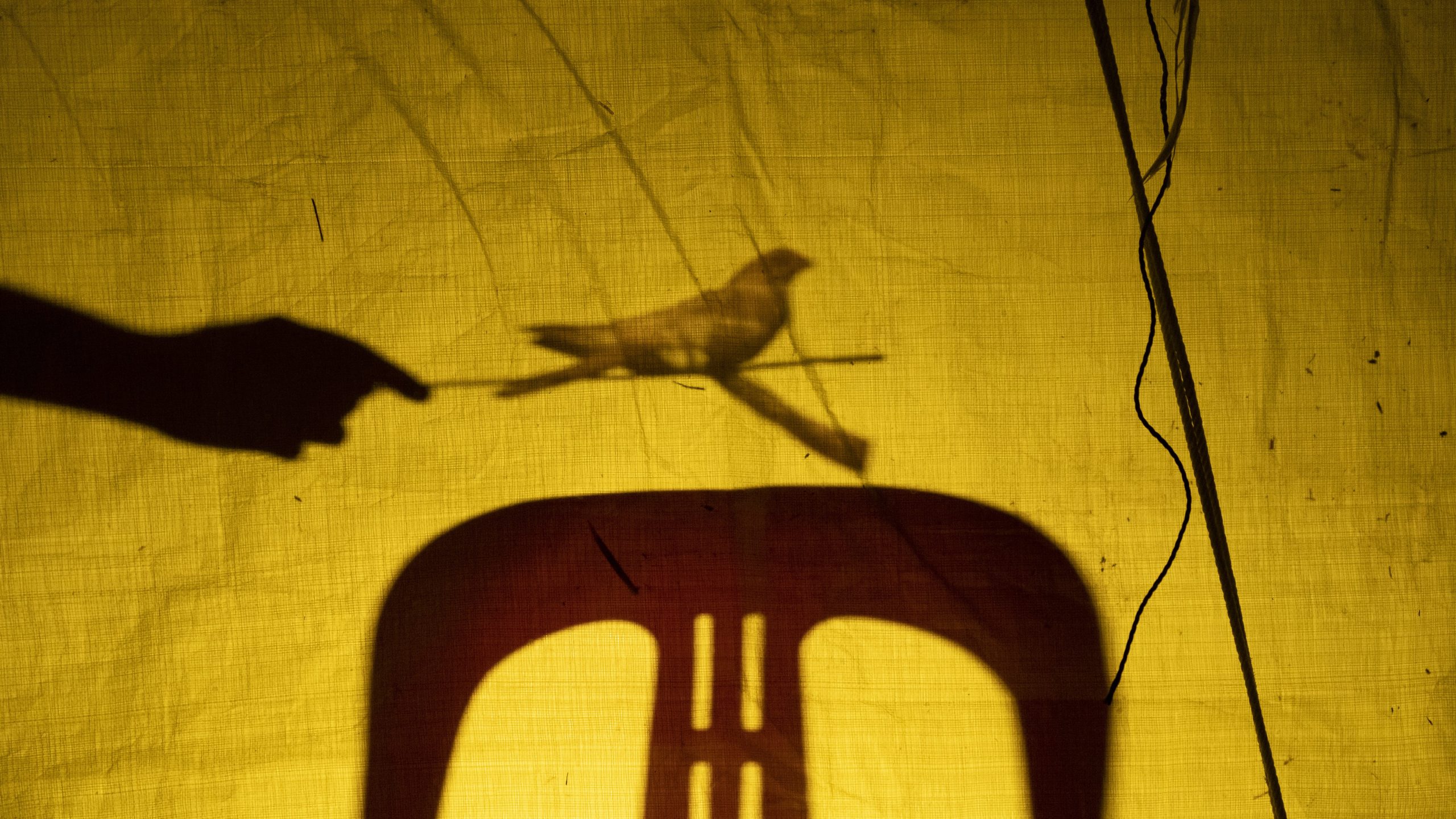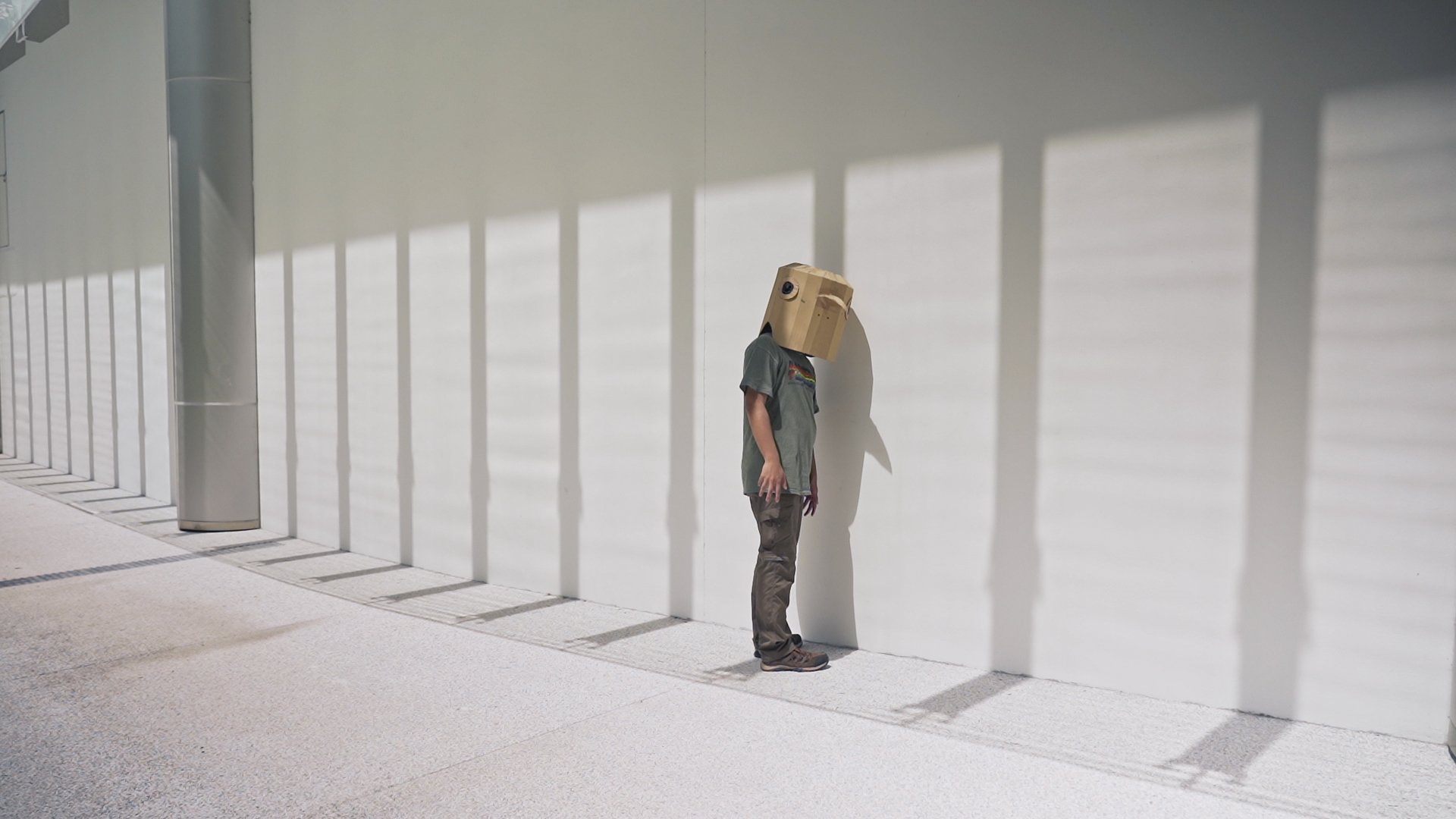Ensounding Memories:
Like Shadows Through Leaves (2021) and Cinematic Remembrance
2021.12
許芳慈 HSU Fang-Tze

許芳慈
現為新加坡國立大學(National University of Singapore, NUS)傳播與新媒體學系講師,擁有新加坡國立大學文化研究博士學位。其論文研究曾獲新加坡「總統研究生獎學金」(President’s Graduate Fellowship)及「新加坡國立大學人文社會科學院潛力青年研究獎助」(FASS Promising Graduate Scholar Award)。其研究興趣包括視覺現代性的形成、冷戰美學、記憶、科技哲學和日常生活中藝術實踐之體現等。
許芳慈除從事學術研究工作外,也是一名策展人,並在過去十年間曾與諸多藝術家和機構合作。2010年至2013年間,她擔任亞洲藝術文獻庫(Asia Art Archive)的數位典藏經理,也於2013年擔任國立臺灣美術館助理研究員。她近期的策展經歷有「未竟之役:太空.家屋.現代主義」(台北市立美術館,台灣,2022)「逸彩:華宇瞬息」(Fistful of Colours: Moments of Chinese Cosmopolitanism)(新加坡國立大學博物館,新加坡,2021);「想望的影像:當微歷史成形」(Wishful Images: When Microhistories Take Form)(新加坡國立大學博物館,新加坡,2020);以及與泰莎.瑪莉亞.奎松(Tessa Maria Guazon)共同策劃的「東南亞性/別身體」(Gendered Bodies in Southeast Asia)(馬尼拉大都會美術館,菲律賓,2019)。
許芳慈亦是資深編輯及譯者。其即將出版的編/譯作品有《東南亞:策展空間》(SouthEastAsia: Spaces of the Curatorial)中文版(由烏特.梅塔.鮑爾[Ute Meta Bauer]與布麗姬特.歐特克[Brigitte Oetker]主編,於2021年出版);她也和町田惠美(Machida Megumi)共同編輯《攝影之聲—第28期:沖繩專題》(Voice of Photography, Issue 28 : The Okinawa Issue ,2020)。其文章散見於《皇家亞洲學會馬來亞分會學報》(Journal of the Malaysian Branch of the Royal Asiatic Society)、《藝術觀點》(Art Critique of Taiwan)與《藝術界》(LEAP)。
Hsu Fang-Tze is a lecturer at the Department of Communications and New Media Department, National University of Singapore (NUS). She holds a Ph.D. in Cultural Studies from NUS. Her dissertation research was supported by the President’s Graduate Fellowship and the FASS Promising Graduate Scholar Award. Her research interests include the formation of visual modernity, Cold War aesthetics, memory, philosophies of technology, and the embodiment of artistic praxis in everyday life.
Apart from her academic work, she has also been a curator, and has worked with many artists and institutions in the last decade. From 2010 to 2013, she served as the digital manager for Asia Art Archive. She was appointed a curator for the National Taiwan Museum of Fine Arts in 2013. Her most recent exhibitions including Art Histories of a Forever War: Modernism between Space and Home (2022, Taipei Fine Arts Museum, Taiwan), Fistful of Colours: Moments of Chinese Cosmopolitanism (2021, NUS Museum, Singapore), and Wishful Images: When Microhistories Take Form (2020, NUS Museum, Singapore). In 2019, she presented Gendered Bodies in Southeast Asia in collaboration with Tessa Maria Guazon at the Metropolitan Museum of Manila.
She is also an experienced editor and translator. Her upcoming editorial and translation work include the Chinese translation of SouthEastAsia: Spaces of the Curatorial (edited by Ute Meta Bauer and Brigitte Oetker, published in 2021). She also co-edited Voice of Photography, Issue 28 : The Okinawa Issue (2020) with Machida Megumi. Her writings can be found in the Journal of the Malaysian Branch of the Royal Asiatic Society, Art Critique of Taiwan (ACT), and LEAP (China).
A geography of sound has no maps; it produces no cartography.
“Geographies of sound: Performing Impossible Territories”,
The Political Possibility of Sound by Salome Voegelin [1]




Film Still {if your bait can sing the wild one will come} Like Shadows Through Leaves, 28-minute short film by The Migrant Ecologies Project 2021
Featuring Tanglin Halt as the focus of the story, {if your bait can sing the wild one will come} Like Shadows Through Leaves (hereafter referred to as Like Shadows Through Leaves) is an experimental short by The Migrant Ecologies Project and was premiered at the International Short Film Festival Oberhausen in 2021. From the film’s opening scene, the cinematic language of Like Shadows Through Leaves is conveyed through its multivalence of enunciations—Malay, Tamil, Hokkien, Teochew, and, most predominantly, a broad spectrum of bird sounds. The opening segment not only consists of voiceovers relaying dialects that introduce the physical situatedness of the project but also is layered with field recordings of bird songs that offer a sonic depth in its out-of-worldness. Together with the abstract of the scientific image captured by a microscope, the film introduces a cinematic experience that challenges the ocular-centric reception mode. In this cinematic space and time, memories of Tanglin Halt are ensounded through the relations between humans and birds. The recollections of residents’ everyday lives are narrated as part of a sociality that essentially centres around Tanglin Halt as a contact zone of contentions where feathered creatures, their homo sapiens neighbours, ecology activists, and bird poachers are all passionate about and situated in the place in different conflicting ways. In fact, the title “If your bait can sing the wild one will come” is a phrase derived from an interview with a former bird-trapper who is also featured in the film. Here, the contours of Tanglin Halt are emplaced by a nexus of passionate but contested engagements with avian and other more human worlds. There is also an intense intersection and deep ecological knowledge shared between birds, humans, and other non-human residents in the nearby forest, around the Tudigong’s (Lord of the Soil and the Ground) makeshift shrine, within the residential compound, and inside their houses.
Communities of both migratory birds and humans are featured as resident protagonists of Tanglin Halt. The positionality of the narrators/storytellers/voice performers is constantly shifting according to birds and the forms of remembrance. In other words, when the aural experience is not subjected to the eye, the memories of a listener are “intersubjectively constituted in perception, while producing the very thing [she/he] perceives”. [2] How to see what to see matters, especially when one bears in mind the economy of bird watching that engages an ocular-centristic perception of birds. One may consider how much our visual memories of birds have to do with images “captured” by birdwatchers’ telephoto lenses – a predatory capitalist/colonial gaze. It is a form of image production that not only fetishises birds for visual consumption but also silences birds through oceans of high-resolution still images circulating in digital formats. With a keen awareness of the politics of visuality and a determination to move away from the visual rhetoric of “capture”, Like Shadows Through Leaves is both the film title and its method of cinematic storytelling. Lucy Davis, a member of the Migrant Ecologies Project and the conceptualiser of the film, explains the shadow play in the film by referring to the following quote from Eduardo Cadava’s writing,
By casting shadows across itself, the surface of the earth, and the bodies or objects nearby, the tree works like a photographic apparatus and, in its collaboration with the light of the sun, recalls the earliest photographic experiments – not only those of William Henry Fox Talbot or Anna Atkins, whose “photogenic drawings” were among the first efforts to produce images without a camera, but also those of Aristotle himself. [3]
In Cadava’s alternative genealogy, moments of presence are constantly photographed by the ingenuity of nature. Unlike the way that the mechanical reproduction of the photographic arts encapsulates time, the collaborative results of the sun and the earth are shadows and shadowy images that do not compromise the openness of time. As time streams through thoughts like a river in one’s memory, shadows embody the flow of time for one’s eyes. By not including a photographic representation of birds in Like Shadows Through Leaves, the viewers’ eyes are captivated by segments of stop-motion shadowplay and are animated by the shadowy contours of birds. While the video camera navigates through the eerily empty Tanglin Halt and the dense forest of the former Malayan Railways under the scorching sunlight, the asynchronicity between the visual and the aural of the film offers a dimensionality of socioeconomics with volumes of nostalgia and the reality of displacement in time of developmentalism.
Like Shadows Through Leaves presents Tanglin Halt as what Donna J. Haraway describes as a contact zone [4] where the co-becomingness of multispecies sociality is embodied in forms of entanglement. Through scenes of a Chinese uncle mimicking bird songs and segments of a South Asian auntie [5] vividly introducing herself as Parrot Mother, the nuance of entanglement stands for a dynamic of the ecological assemblage that is experienced in an aural mode of remembrance. When the presence of reenactments signifies the passing, it also constitutes a collective refusal of oblivion by residing in its new habitat in those listening bodies. As Tim Ingold states, “Of the body, as it sings, hums, whistles or speaks, that it is ensounded.” Whether birds or humans, whether on screen or off screen, bodies cholate, feel, and breathe when sound is transmitted through the air. All are entangled through the sensation of listening while being listened to. In the cinematic time and space of Like Shadows Through Leaves, Tanglin Halt is no longer a static symbol of the past on a one-dollar note but is a vibrant assemblage of lived and living beings that enchants new encounters for the future.
2 Voegelin, Salomé. Listening to noise and silence: Towards a philosophy of sound art. Bloomsbury Publishing USA, 2010, P. xii.
3 Cadava, Eduardo. Paper Graveyards. MIT Press, 2021, P. 288.
4 The notion of contact zone has its origin in colonial and postcolonial studies, which describes the emergence of a new paradigm in cross-cultural encounters. In Haraway’s work, she uses the term to depict to “the flesh of mortal world-making entanglements”. See, Haraway, Donna J. When Species Meet. Minneapolis. Minn.: University of Minnesota Press, 2008, P.4.
5 “Auntie” in Singapore and Malaysian English is an honorific designation for mature women of the community. Elsewhere in the world, it might sound patronising, but it’s a vernacular honour in the context of Singapore.
